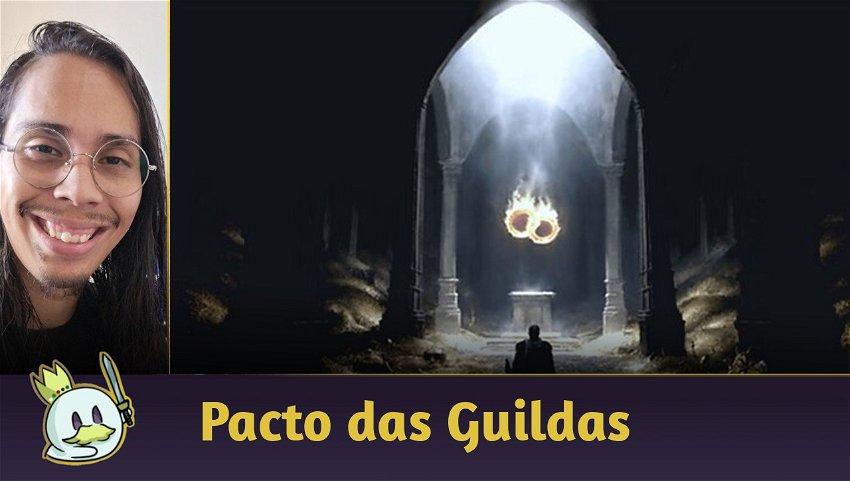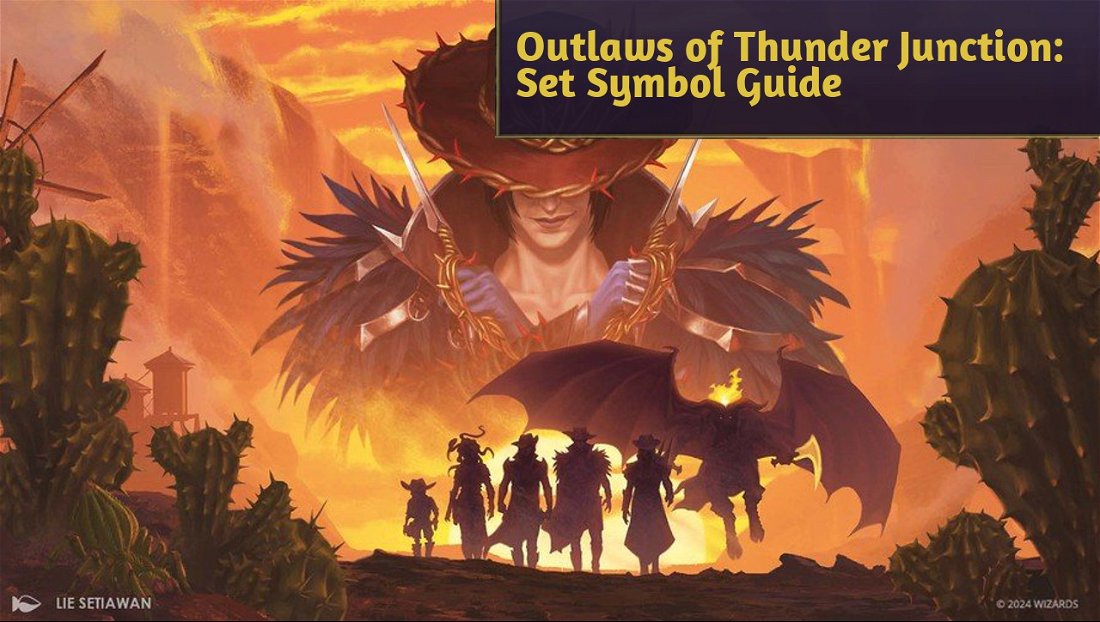Introduction
Standard went through a few changes last year that, supposedly, were meant to revitalize it. Among them, we got a new rotation that takes longer to rotate, and therefore its cards stay available for longer, which encourages players to play Standard for longer.
Ever since, this format received new cards and archetypes. Cards like Cavern of Souls, Deep-Cavern Bat, Virtue of Loyalty, Get Lost and many others gained space and consolidated themselves as pillars in Standard. And even if these cards do show up repeatedly in many decks, this format is still diverse and welcomes many strategies.
Ad
Considering the next Standard Pro Tour will put the next set, Outlaws of Thunder Junction, in the spotlight, I decided to delve deeper into the current format to see if we can point out a few standout decks. I'll analyze the main archetypes, and review the impact of the following decision, recently announced by Wizards of the Coast: no changes to Standard in the latest Banned and Restricted announcement.
Tier 1
Esper Raffine
This deck stays on top, set after set, and should remain so until the next rotation, when Raffine, Scheming Seer, the heart of this strategy, is no longer valid in Standard.
Esper Raffine got several relevant additions in the latest sets, such as Deep-Cavern Bat, Aclazotz, Deepest Betrayal, Virtue of Loyalty, and No More Lies, and became even more resilient and consistent. Playing against this deck isn't an easy task, even if we consider today, in Standard, removals are much more powerful than creatures.
Esper is challenging to face and is still giving players positive results week after week in big events, both online and on tabletop. It also represents the highest percentage of play in the current metagame.
Domain Ramp
Domain dominated Standard for a while, but it started struggling as soon as new decks that focus on faster strategies came along. Even then, this archetype is still resisting as one of the best in this format. This strategy also acquired some interesting new cards that were released in the latest sets, and its lists are relatively varied nowadays.
Cavern of Souls helped its mana base; Virtue of Persistence was added to lists that focus more on controlling the game; Trumpeting Carnosaur was an option for those who wanted more value; Tishana's Tidebinder popped up occasionally as another resource against the several threats in Standard, and Spelunking has conquered space in lists as another ramp tool, besides Archdruid's Charm, which can easily be added to this archetype as well.
Soon, after the next rotation comes along, this deck will lose some of its main pieces, like the New Capenna triome and Topiary Stomper, which can force it to adapt or perish, but Leyline Binding and Up the Beanstalk are enough to make players build a new version of ramp.
Additionally, who knows what the next sets can bring? Maybe there's something relevant for this archetype in Standard.
Boros Convoke
Convoke came up more recently in the metagame, and became one of the main Domain predators. This changed the format and brought a solid option to aggro lovers.
Its strategy focuses on putting several creatures on the board incredibly fast, and they'll help you build a massive board presence in just a few turns, so you can then finish your opponent with Imodane's Recruiter.
Novice Inspector was one of the new cards in Standard that allowed this deck to thrive, considering it gave us enough redundancy to be able to set up its most explosive turns. Case of the Gateway Express, Warden of the Inner Sky, and Sanguine Evangelist also fit this list perfectly.
Ad
Tier 2
Dimir Preacher
Dimir Midrange, or Dimir Preacher, is another midrange deck that has popped up quite a lot in Standard and has achieved good results. It is basically a "goodstuff" deck, and therefore includes the best cards possible in these colors.
We can say this Dimir is Esper without white, and it might eventually become the most present midrange version in this format in the future, after rotation. However, it is precisely because it is considered an "worse Esper" that it is a Tier 2 deck.
Azorius Control
Azorius Control is another deck that came up more recently and has achieved good results week after week. By the way, I even showcased this deck in a recent article, which you can check out here.
The strategy in this Azorius Control is really similar to its strategy in Pioneer today, considering it uses powerful removals and counters to control the game and force your opponent to spend all their resources. It then finishes the game with a big threat like The Wandering Emperor. This archetype is only possible because we have No More Lies in Standard, as this card is one of the main reasons players are playing this deck, even with the strong presence of Cavern of Souls in almost every list in this format.
However, the presence of miracles makes the life of control players incredibly difficult and, for this reason, even though it is well-positioned in the metagame, and quite present, Azorius can't be placed higher than this.
Golgari Mosswood
Golgari Mosswood, or Golgari Midrange, as it is popularly known, is another relatively new deck in Standard. Its main piece is Mosswood Dreadknight, which was released in WOE.
This deck, just like Dimir Preacher, is basically a pile of good cards in this color combination, but it is a bit lower than other midrange decks. This is because there are several powerful spells that make a lot of difference but, for one reason or another, can't be added to this list.
Mono-Red Aggro
Mono-Red was one of the best decks in Standard for a while, but it started declining as Standard adapted and found ways to deal with it. However, it is still a solid option for those who love aggressive strategies.
Fugitive Codebreaker, Charming Scoundrel, Monstrous Rage, and Goddric, Cloaked Reveler were the most relevant recent additions this deck got in the latest sets. I believe it should remain relatively well-positioned after rotation comes along, considering it will be one of the decks that will lose the lowest number of pieces, and, additionally, it will also probably get new cards.
Temur Control
Now, it is time to discuss one of the latest trends, Temur Control. This deck came along recently and has already brought relevant results in main Magic Online events. It showed us it has potential to be, who knows, maybe a new Tier 1 deck, but, for now, I'll leave it right here.
Ad
This is basically a combo deck, and, in a certain way, it is similar to the now-extinct Temur Reclamation, which broke Standard last year with spells like Wilderness Reclamation and Uro, Titan of Nature's Wrath. Its end game was getting a lot of mana to finish it with a massive Expansion // Explosion.
With the new Temur, the plan is to cast a Worldsoul's Rage big enough to finish your opponent. To do this, we'll use cards like Fallaji Archaeologist and Aftermath Analyst, which will play as many lands as they can in the graveyard, and we'll also use a lot of recursion to create the mana we need to play Worldsoul's Rage.
Tier 3
Rakdos Aggro
Rakdos went through many changes recently, particularly after Fable of the Mirror-Breaker, Reckoner Bankbuster, and Invoke Despair were banned last year. It is no longer a midrange deck, full of value, and now focuses on playing impactful creatures and following a game plan that puts pressure on your opponent.
Inti, Seneschal of the Sun and Long Goodbye are a few of the most recent additions. There is also a version that is more similar to the game plan this deck had before, and abuses Ixalan's Discover mechanic, with Trumpeting Carnosaur and Geological Appraiser. However, Rakdos lost a lot of space and today, even in its most recent version, it hasn't yielded many expressive results.
Bant Poison
This strategy focuses on creatures with Toxic, and the main plan is to put all ten poison counters on your opponent to defeat them.
This deck didn't get any updates nor relevant cards, particularly because its main mechanic should not be featured again in a new set for a long time (maybe never again). It is an interesting deck, but it lacks tools to deal with the main threats in Standard a bit better.
Esper Legends
This is the aggro version of Esper which, unlike its Tier 1 version, focuses more on the value created by its creatures and the synergies they have among each other. However, this deck has the same issue as Rakdos Aggro, and misses out a lot by not using all the resources a midrange strategy can bring with cards like Wedding Announcement, Virtue of Strength, and No More Lies.
Not to mention, this archetype will lose many cards after this year's rotation comes along.
Gruul Aggro
Gruul is basically a Mono-Red that splashes Questing Druid. This deck even yielded some results when it first came along, but it hasn't performed well ever since. I believe it has the same issue as Mono-Red itself.
All that is left for us to do is to wait and see which changes we can bring to this archetype to upgrade it in the upcoming sets, and see if it bounces back after we upgrade it.
Dimir Cover-Up
This is a hard control deck that uses Deadly Cover-Up as its main piece. It is basically a combination of counters and removals that uses Jace, the Perfected Mind as its finisher. It has yielded players some positive results occasionally, but I don't consider it a strong candidate, particularly if we compare it to other control decks in Standard. However, we'll only be able to tell for sure after the Pro Tour.
Ad
Azorius Mentor
This is an updated version of Mono Blue Tempo that uses one of the coolest creatures in this format: Monastery Mentor.
White gave this deck a new feel, and the list has incredibly interesting resources, but, unfortunately, it hasn't performed well. Decks that focus on creatures usually struggle in a format that has so many great removals, like Standard.
Final Words
Standard is one of the best formats to play right now. In this review, we covered around 80% of the metagame, and there are still several other decks I didn't mention and could easily be added as Tier 4 or 5 decks. We also have strategies that are going through a rough time, but can bounce back soon. That is the case of Azorius Soldiers, which is struggling right now if we compare it to its absolute peak, but still yields results in the hands of certain players in Magic Online, such as remf and VictorCarvalho01*. Orzhov Breach is another archetype that is going through a tough time right now, but has seen a lot of play in the past.
Out of the latest three sets, we can highlight Lost Caverns of Ixalan as the most impactful, with WOE coming in second, and MKM as the least impactful. Ixalan's power level was truly absurd, and the staples in this set should remain alive and well in Standard for a long time still.
Outlaws of Thunder Junction will be here soon, and it can, potentially, shake up this format. Bloomburrow comes next, and I also expect it to bring many changes and new features.
This was my review of the current Standard metagame. I considered the last thirty days of events both on Magic Online and on tabletop, and, with the Outlaws of Thunder Junction Pro Tour in April, we can expect this format to attract the spotlight from now on. So, many players expect a lot of changes and new decks or archetypes to come quite soon.
Thank you for reading. Leave your questions and feedback in the comment section, and tell me what you expect from the new set in Standard. I'll try to answer all.
See you next time!









— Comments0
Be the first to comment